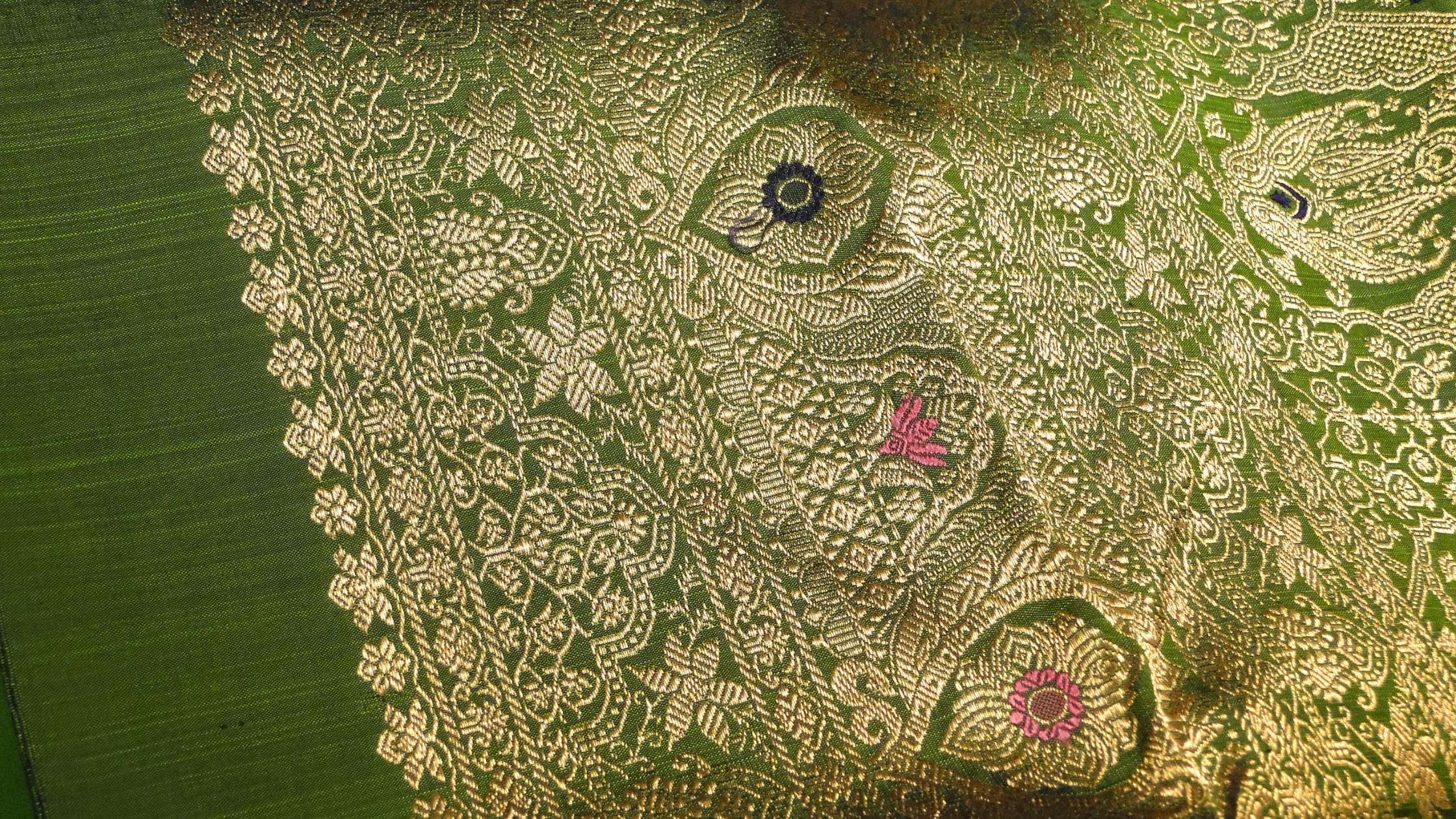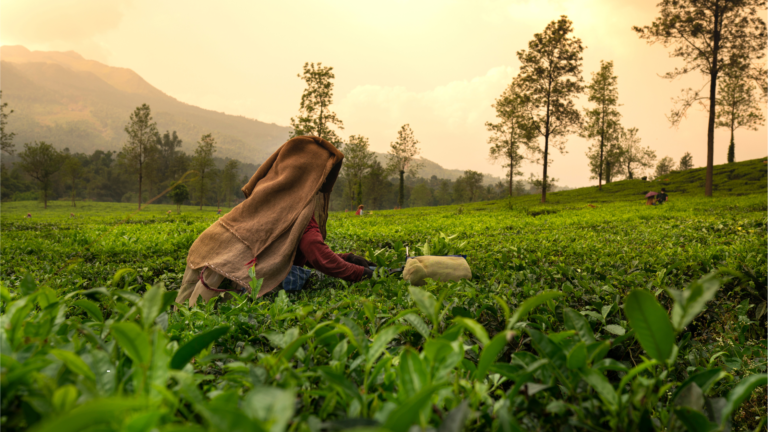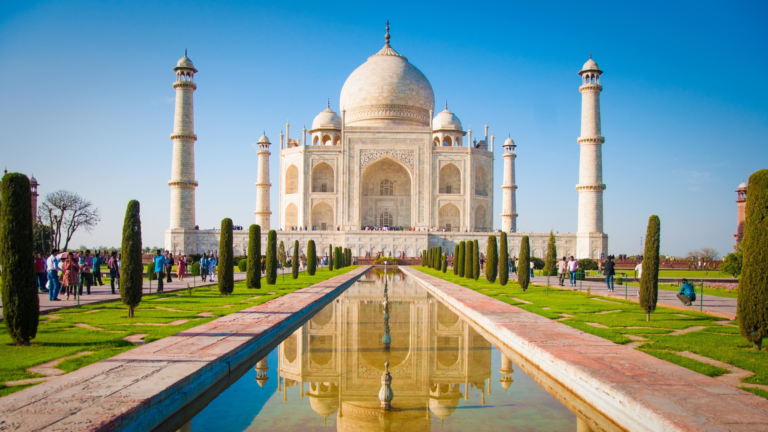India’s rich textile heritage dates back centuries, reflecting a blend of diverse cultures, artisanal techniques, and exquisite craftsmanship. For Canadian tourists with an appreciation for fabric artistry and cultural heritage, exploring India’s historic Silk Route offers a unique journey through time. This route is not just about trade but about India’s legacy in creating some of the world’s finest textiles, from vibrant silks to intricate embroideries. Here’s a guide to immersing yourself in India’s textile heritage and discovering the masterpieces that have shaped Indian craftsmanship.
1. Banarasi Silk from Varanasi, Uttar Pradesh
- Why Visit: Varanasi is the birthplace of Banarasi silk, a fabric known for its luxurious feel and intricate zari work, often woven with real gold or silver threads. Exploring the narrow lanes of Varanasi’s weaving districts offers a glimpse into the artistry that goes into creating this exquisite silk.
- What to Experience: Watch artisans work on handlooms as they create timeless Banarasi sarees. You can also shop for sarees, shawls, and dupattas directly from local weavers and workshops.
2. Kanjeevaram Silk from Kanchipuram, Tamil Nadu
- Why Visit: Kanchipuram, often referred to as the “Silk City of India,” is famed for Kanjeevaram silk sarees that boast vibrant colors, intricate patterns, and durability.
- What to Experience: Visit traditional weaving centers where artisans use techniques passed down through generations. A Kanjeevaram saree is a beautiful souvenir, representing the vibrant colors of South India.
3. Pashmina from Kashmir
- Why Visit: Known as the “soft gold” of fabrics, Kashmiri Pashmina is cherished for its warmth, lightweight feel, and softness. The craftsmanship involved in creating a Pashmina shawl is as delicate as the wool itself.
- What to Experience: Visit workshops in Srinagar to witness artisans hand-weave and embroider these shawls. The intricate needlework, known as Sozni embroidery, adds elegance to each piece, making it a treasured purchase.
4. Chanderi from Madhya Pradesh
- Why Visit: Chanderi fabric, known for its lightweight texture and sheer finish, has origins dating back to the Vedic period. This fabric is often used to create sarees adorned with beautiful motifs inspired by nature.
- What to Experience: In Chanderi, meet local weavers and explore the weaving villages to see the complex artistry involved in creating these translucent fabrics.
5. Patola from Patan, Gujarat
- Why Visit: The Patola sarees from Patan are known for their double-ikat technique, a complex and time-intensive process that requires exceptional skill. Patola sarees are famed for their vibrant colors and geometric patterns.
- What to Experience: Visiting Patan’s weaving community allows you to see the intricate process of dyeing and weaving Patola sarees. The historic town is also home to workshops where you can purchase these precious textiles.
6. Bhagalpuri Silk from Bhagalpur, Bihar
- Why Visit: Bhagalpur, known as the “Silk City of Bihar,” is celebrated for its tussar silk, which has a distinctive texture and natural gold color.
- What to Experience: Visit the Bhagalpur weaving centers to see artisans transform raw silk into gorgeous sarees, scarves, and dupattas. The town’s markets offer a range of silk products that make for unique souvenirs.
7. Bandhani and Ajrakh from Rajasthan and Gujarat
- Why Visit: Bandhani is a traditional tie-and-dye technique, while Ajrakh printing uses natural dyes and intricate block patterns. Both crafts are popular in Gujarat and Rajasthan.
- What to Experience: Visit artisan villages like Bhuj and Kutch, where you can participate in dyeing workshops, try your hand at block printing, and learn about natural dyeing techniques from local craftspeople.
8. Phulkari Embroidery from Punjab
- Why Visit: Phulkari, meaning “flower work,” is a traditional Punjabi embroidery style known for its vibrant colors and floral patterns. Phulkari shawls and dupattas are cherished for their intricate needlework and are often made by rural women.
- What to Experience: In villages around Amritsar and Patiala, you can witness the creation of Phulkari pieces. Many local artisans will be happy to share stories behind this colorful art form.
9. Mysore Silk from Karnataka
- Why Visit: Mysore silk is renowned for its sheen, softness, and purity. This silk is often woven into sarees that are a symbol of elegance and simplicity.
- What to Experience: Mysore offers silk factories where visitors can learn about the weaving process and shop for authentic Mysore silk sarees, a staple in South Indian ceremonies.
Tips for Canadian Tourists Exploring India’s Silk Route
- Support Local Artisans: Purchasing directly from artisans ensures fair wages and helps sustain traditional craftsmanship.
- Explore Handloom Emporiums: Government-run emporiums in major cities like Delhi, Mumbai, and Kolkata offer genuine, certified products from across India.
- Attend Craft Fairs: Events like the Surajkund Mela in Haryana and the Dastkar Craft Mela in Delhi bring artisans from different regions under one roof, providing an excellent opportunity to explore diverse textiles.
- Learn the Stories: Many artisans have fascinating stories about their craft’s history. Engage in conversations to understand the significance behind each textile.
India’s Silk Route is not just a journey through fabric but a pathway into the heart of India’s cultural and artistic heritage. For Canadian tourists, this experience provides an opportunity to embrace the richness of India’s textile traditions, connect with artisans, and return home with pieces that tell a story. Whether you’re a collector, a fashion enthusiast, or simply someone who appreciates beauty, India’s Silk Route promises memories woven with threads of history and artistry.






